Where to dig in?
You’ll get the best weed killer results by choosing herbicides that match your specific garden needs. Use pre-emergence products early in the season to prevent weed seeds from germinating, then apply post-emergence herbicides for existing weeds. Select selective herbicides to protect your desired plants while targeting specific weed types like grasses or broadleaf varieties. Chemical options provide faster control, while organic alternatives using acetic acid offer safer, environmentally-friendly solutions that require more frequent applications for sustained effectiveness.
Understanding Different Types of Herbicides for Your Garden
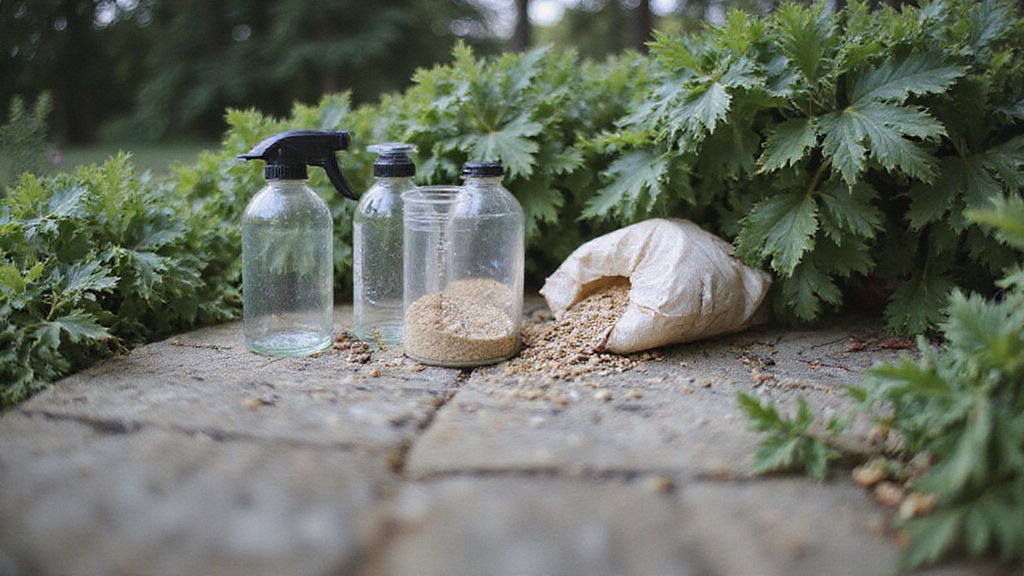
When you’re selecting the right herbicide for your garden, understanding how different products work will help you make smarter choices and achieve better results.
Pre-emergence vs. Post-emergence Options
Pre-emergence herbicides work before weeds appear, preventing seeds from germinating in your soil. You’ll apply these products early in the season for long-term protection. Post-emergence herbicides target actively growing weeds that you can already see.
Selective vs. Non-selective Control
Selective herbicides eliminate specific weed types while protecting your desirable plants. Non-selective options kill most vegetation, making them perfect for driveways or walkways. Grass-selective products target grassy weeds, while broadleaf-specific herbicides handle dandelions and similar plants. Some weed and feed products combine both weed control and fertilization, offering convenience and improved lawn health.
Mode of Action Groups
Different herbicide groups work through unique mechanisms. ACCase inhibitors block fat formation in grasses, ALS inhibitors disrupt amino acid production, and photosystem inhibitors interfere with photosynthesis processes. Using multiple herbicide groups reduces selection pressure on herbicide-resistant weeds.
Key Features That Make Weed Killers Effective
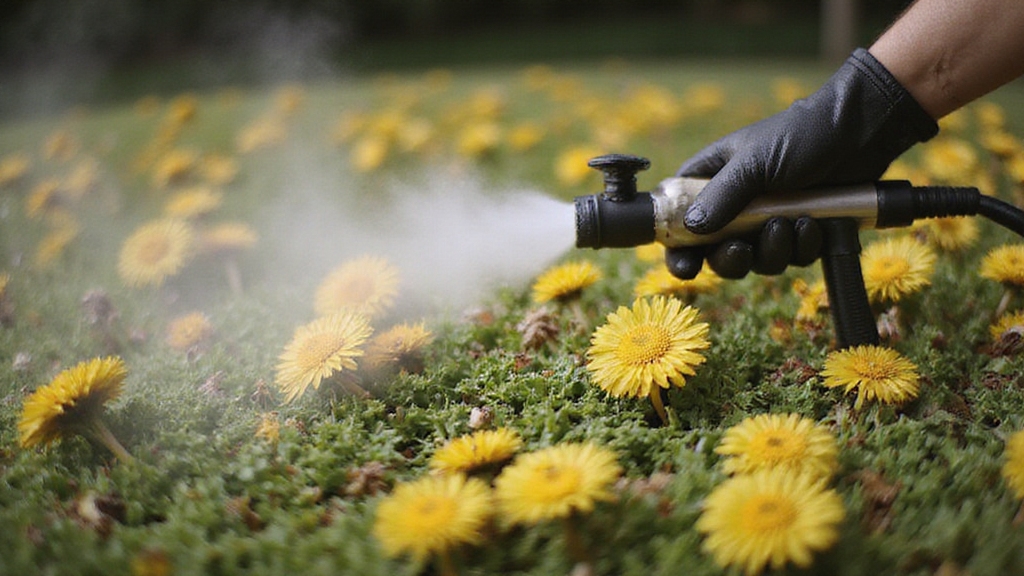
Several critical features determine how well a weed killer will perform in your specific gardening situation, and understanding these characteristics helps you choose products that deliver consistent, enduring results.
Broad-Spectrum Effectiveness
Multi-purpose weed killers eliminate broadleaf, grassy, and woody weeds while targeting both annual and perennial growth cycles for comprehensive control.
Look for formulas that target broadleaf, grassy, and woody weeds simultaneously. Multi-purpose products disrupt growth cycles of both annual and perennial plants, addressing surface foliage and root systems for complete elimination.
User-Friendly Application
Modern weed killers offer adjustable nozzles, multiple spray patterns, and battery-powered wands for precise control. You’ll find easy spray, pour, or spot application methods that don’t require professional equipment. Some gardeners may prefer using long-handled tools like the CobraHead Long-Handle Weeder & Cultivator for precise manual weeding in hard-to-reach areas.
Quick Results with Lasting Impact
Effective products show visible results within hours under ideal conditions, while providing long-term suppression across multiple growing seasons. This reduces your maintenance workload extensively. Quality formulations become rainproof in minutes, protecting your investment from unexpected weather changes.
Top Weed Killer Brands and Their Specialties
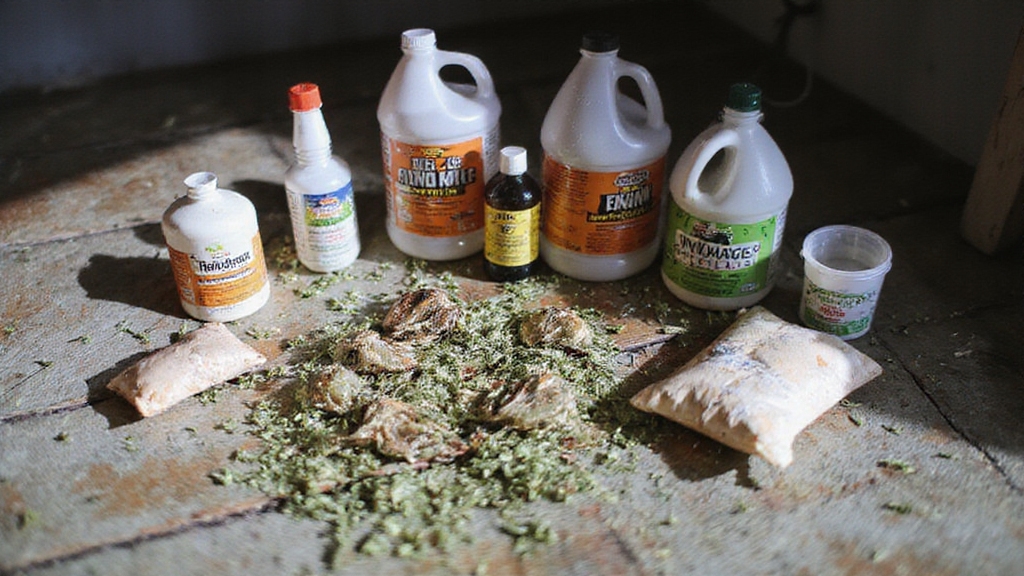
Understanding these effective features helps you identify products that’ll work best in your garden, but choosing the right brand guarantees you get reliable performance and proven results.
Organic Weed Control Leaders
Green Gobbler’s vinegar-based formula offers OMRI-listed organic protection that’s safe for your family and pets. Safer Brand and EcoSmart use natural plant oils, while Espoma Organic provides environmentally-friendly weed control.
Chemical Herbicide Champions
Roundup’s glyphosate-based products deliver powerful broadband weed elimination. Ortho offers versatile options like Weed B Gon for selective control. Compare-N-Save produces affordable, strong herbicides, and RM43 combines 43% glyphosate with prevention technology.
Professional-Grade Options
Continental and Syngenta manufacture industrial-strength solutions for large areas. DoMyOwn supplies professional herbicides for DIY enthusiasts. Continental Research produces soil sterilants that can maintain bare ground for multiple growing seasons. Brands like Black & Decker and Milwaukee, known for their reliable tools, offer complementary gardening equipment that enhances the efficacy of these weed control solutions.
Each brand specializes in specific weed control methods, so you’ll find targeted solutions for your particular garden needs.
Organic Vs Chemical Weed Control Options
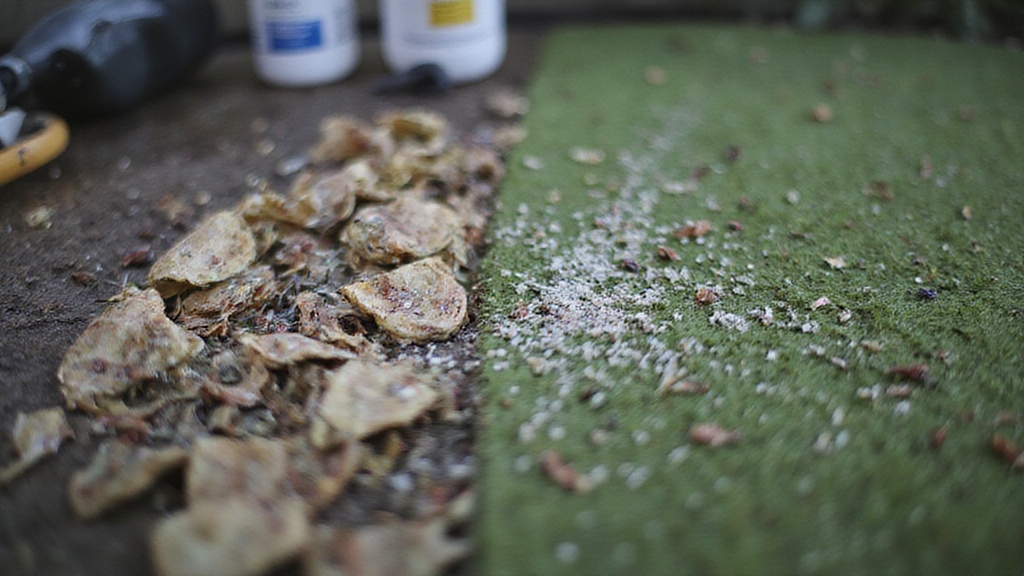
Your choice between organic and chemical weed killers will shape both your garden’s health and your family’s safety for months to come.
Chemical Herbicides: Power and Persistence
Chemical options deliver faster, more complete control by killing entire plants including roots. You’ll need fewer applications since these products persist 30-365 days in soil. However, you must restrict children and pets from treated areas for 24-72 hours due to toxic ingredients. Modern computer vision sprayers can selectively apply herbicides only to weeds while avoiding crop plants. Specialized tools like the Nisaku Hori-Hori Tomita Weeding Knife also aid in controlling weed growth manually and precisely.
Organic Herbicides: Safety with Trade-offs
Organic herbicides using acetic acid or plant oils allow immediate re-entry and degrade within 14 days, protecting water quality. You’ll apply them more frequently since they only control top growth, not roots. They’re non-selective, potentially damaging desirable plants, and require dry conditions for effective absorption.
Pre-Emergent Vs Post-Emergent Weed Prevention Strategies
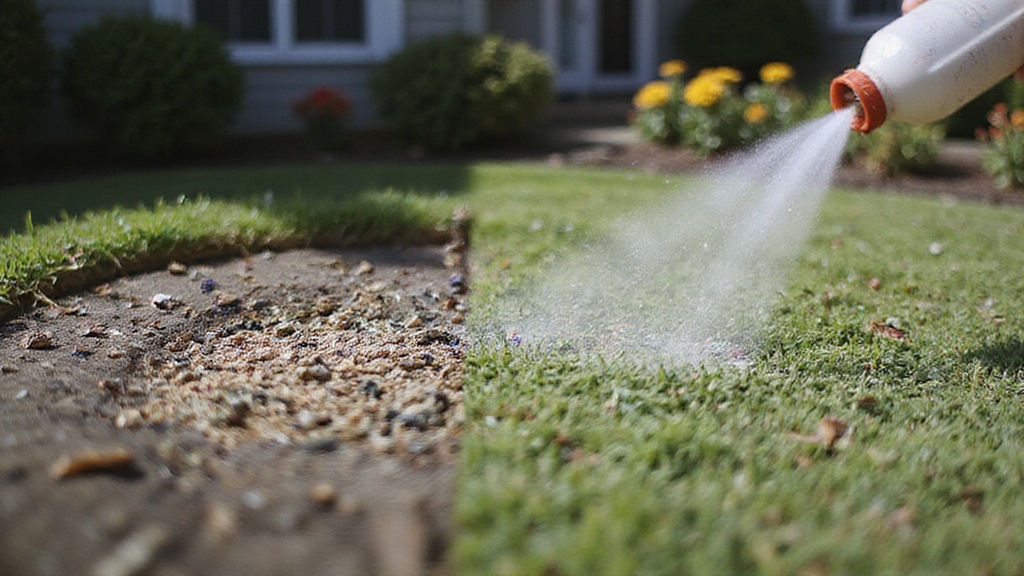
Two distinct approaches can transform your weed management strategy, each targeting weeds at completely different stages of their growth cycle.
Pre-Emergent Strategy
Pre-emergent herbicides create a protective soil barrier before weed seeds germinate. You’ll apply these products in early spring or fall, preventing annual weeds like crabgrass from establishing. This proactive approach reduces maintenance, allows your lawn to flourish without competition, and provides long-term control. However, you can’t seed grass immediately after application, and timing must be precise. To complement this strategy and enhance your lawn’s health, consider using a nitrogen-based fertilizer to promote leaf growth and a vibrant green color.
Post-Emergent Strategy
Post-emergent herbicides target existing weeds after they’ve emerged. You’ll see immediate results and can apply them flexibly throughout the growing season. They control both annual and perennial weeds effectively. Some post-emergent products are non-selective, affecting a broad range of plants, while others target specific weed types for precision control. The downside? You’re reacting to problems rather than preventing them, potentially requiring multiple applications.
Application Techniques for Maximum Effectiveness
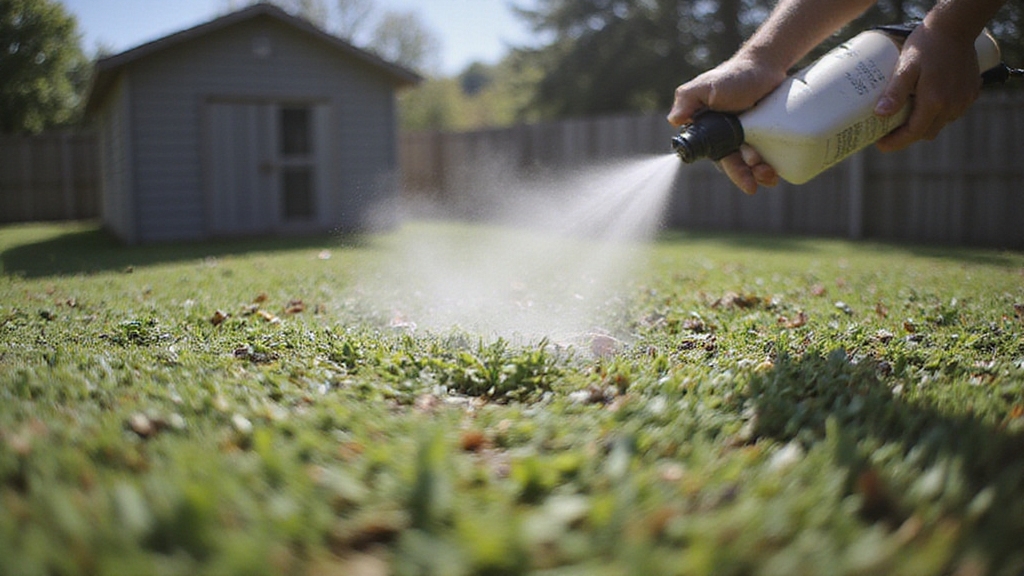
Proper application techniques can make the difference between mediocre results and complete weed elimination in your garden. You’ll achieve better control when you apply herbicides during active weed growth periods, especially with contact herbicides like Finale. Use the spray-to-wet method, covering leaves thoroughly without creating runoff. This guarantees maximum absorption while preventing waste. The right gardening gloves can enhance your herbicide application experience, ensuring comfort and protection during use.
| Technique | Best For | Key Benefit |
|---|---|---|
| High Volume Spraying | Large infestations | Quick absorption, rainfast within hours |
| Boom Spraying | Extensive areas, pastures | Multi-nozzle efficiency, uniform coverage |
| Foliar Application | Broadleaf weeds | Direct leaf absorption, selective targeting |
| Shield Protection | Mixed plantings | Protects desirable plants from drift |
Choose your spray equipment based on coverage area. High-pressure systems work well for large spaces, while handheld sprayers suit smaller gardens. Always protect desirable plants with shields during application. Before selecting any herbicide, ensure you’ve completed proper weed identification through resources like your County Extension Service to match the most effective treatment to your specific weed problem.
Safety Precautions When Using Garden Herbicides
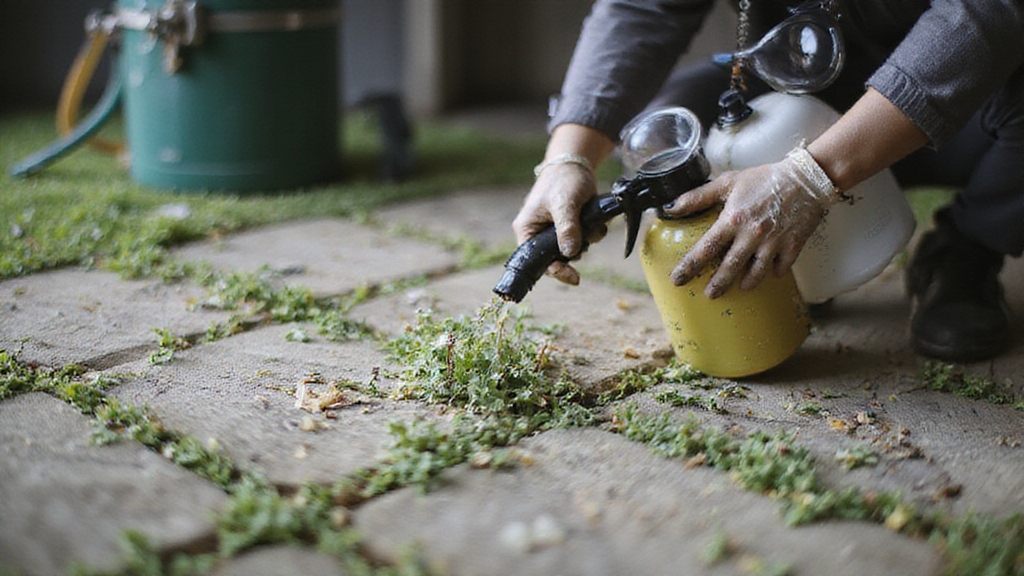
Here is the revised article subheading content with the new sentence and the inline link included:
While herbicides offer powerful solutions for weed control, they require careful handling to protect yourself, your family, and your environment.
Read Labels Completely
Always read the entire herbicide label before use, and follow mixing instructions exactly. Don’t exceed recommended concentrations, and keep labels attached for future reference. Understanding the signal word on the label helps you assess the toxicity level of the herbicide.
Wear Protective Equipment
Use long sleeves, pants, waterproof boots, and neoprene gloves during application. Protective eyewear prevents chemical splashes, while respirators may be necessary for certain products. Reading gardening books for organic practices could provide insights on alternative weed control methods that are environmentally friendly.
Protect Family and Pets
Keep children and pets away until herbicides dry completely. Remove toys and food dishes from treated areas, and restrict access as directed.
Store Safely
Store herbicides in original containers, in cool, dry places away from children. Never reuse containers or pour unused product down drains.
Choosing the Right Weed Killer for Specific Garden Areas
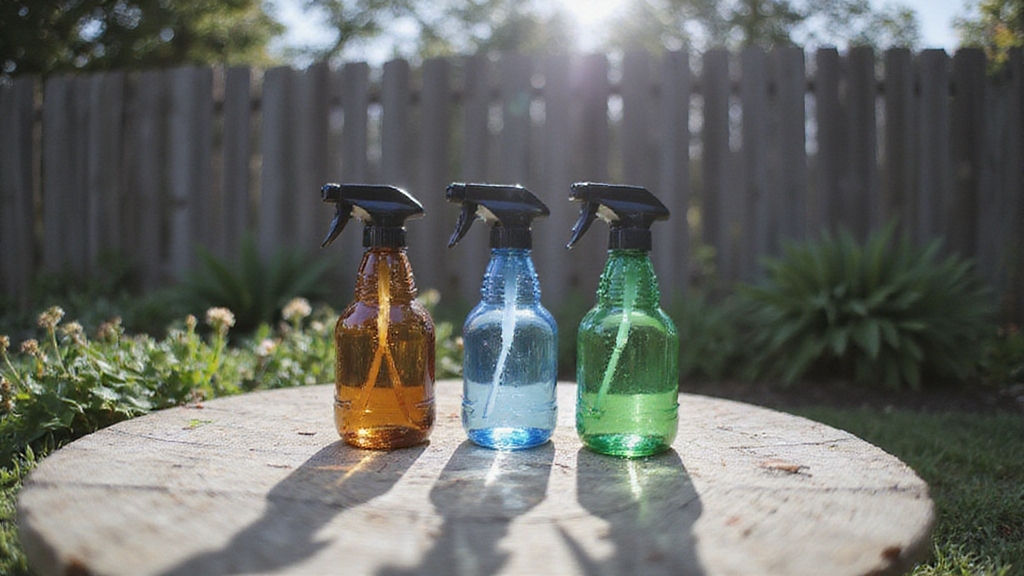
Selecting the most effective weed killer for your garden requires matching the right product to your specific area’s needs, weed types, and safety concerns. You’ll need different approaches for lawn areas versus non-lawn spaces, considering both environmental factors and desired results. Loamy soil, with its balanced composition, is often favored for gardens as it offers excellent drainage and moisture retention, aiding plant growth and overall garden health.
For lawn areas, choose selective herbicides that target weeds without harming grass. Pre-emergent options prevent annual weeds, while post-emergent formulas kill existing growth. Non-lawn spaces like driveways and flower beds can handle stronger, non-selective herbicides.
Timing your application correctly is crucial, with pre-emergent herbicides applied in early spring and post-emergent products used when weeds are actively growing in late spring or early summer.
| Area Type | Recommended Product Type | Key Benefit |
|---|---|---|
| Lawn Areas | Selective Herbicides | Preserves grass health |
| Non-Lawn Areas | Non-Selective Herbicides | Complete vegetation control |
| Garden Paths | Vinegar-Based Killers | Safe, natural option |
Consider environmental impact, especially around pets and children, when making your final selection.
Timing and Weather Considerations for Optimal Results
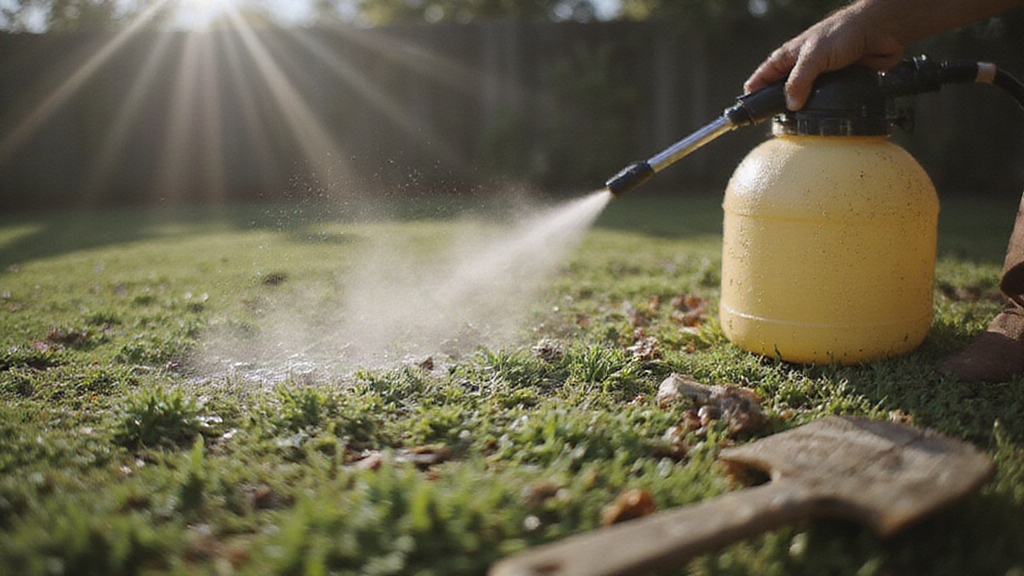
Success with weed killers depends heavily on when and how you apply them, making timing and weather conditions critical factors in your garden maintenance strategy.
Choose the Right Season
Spring and fall offer ideal results since weeds are naturally weaker during these periods. Apply pre-emergent herbicides early in spring to prevent seed germination, while targeting actively growing weeds in fall for maximum effectiveness. Selecting durable equipment, like a heavy-duty hose, can also support garden maintenance tasks throughout the year.
Monitor Weather Conditions
Select calm days without wind or rain for application. Wind carries herbicide droplets to unintended areas, potentially damaging desirable plants. Rain washes away treatments, reducing their effectiveness greatly. Plan applications around predicted rainfall or scheduled irrigation to optimize absorption and prevent washout.
Perfect Your Application Timing
Early morning or late evening provides the best uptake conditions. Apply granular products when grass is damp, then avoid watering for 48 hours afterward to guarantee proper absorption.
Frequently Asked Questions
How Long Do Weed Killers Remain Active in the Soil?
Weed killers remain active in your soil for varying periods depending on their type and environmental conditions. Short-lived herbicides last days to weeks, while medium-lived ones persist for weeks to months.
Long-lived herbicides can remain active for months to years, and extremely long-lived varieties may persist up to 20 years. You’ll find that soil type, pH, weather patterns, and the herbicide’s chemical structure all influence how long they stay active in your garden soil.
Can I Make Homemade Weed Killer With Household Ingredients?
You can easily make effective homemade weed killer using common household ingredients.
Mix one liter of white vinegar, three tablespoons of salt, and three teaspoons of dish soap together. The vinegar and salt dehydrate weeds, while soap helps the solution stick to leaves. Spray directly onto weed leaves for best results. You’ll see wilting within hours to days.
Will Weed Killers Affect Beneficial Insects Like Bees and Butterflies?
Yes, weed killers can seriously harm beneficial insects like bees and butterflies. Many herbicides kill honey bee larvae directly, and studies show they reduce butterfly pupation success by 24-36%.
Even if they don’t kill insects outright, herbicides remove flowering plants that provide essential nectar and pollen. You’ll protect pollinators better by spot-treating weeds, avoiding spraying during peak activity times, and choosing manual removal methods instead.
How Often Should I Reapply Weed Killer for Ongoing Control?
You’ll need to reapply weed killer based on the product type and timing. Use pre-emergent herbicides once or twice yearly in late winter and spring.
Apply post-emergent treatments two to three times between summer and fall as weeds appear. Extended-control formulations last four months to a year, while basic products need reapplication as new weeds emerge throughout the season.
What Should I Do if Weed Killer Accidentally Kills My Plants?
If weed killer accidentally damages your plants, act quickly to minimize harm. Water affected plants thoroughly to dilute remaining chemicals and reduce stress.
Remove any contaminated soil or mulch around the roots. Provide gentle fertilizer to support recovery, but don’t over-feed stressed plants. Monitor your plants closely for new growth signs. Consider consulting local gardening experts for severe damage situations.
Conclusion
You’ve got all the tools you need to tackle weeds successfully in your garden. Remember to choose the right herbicide for your specific situation, follow safety guidelines carefully, and time your applications properly. Whether you pick organic or chemical options, consistent maintenance will keep your garden healthy and weed-free. Start with these proven strategies, and you’ll see noticeable improvements in your garden’s appearance within weeks.

